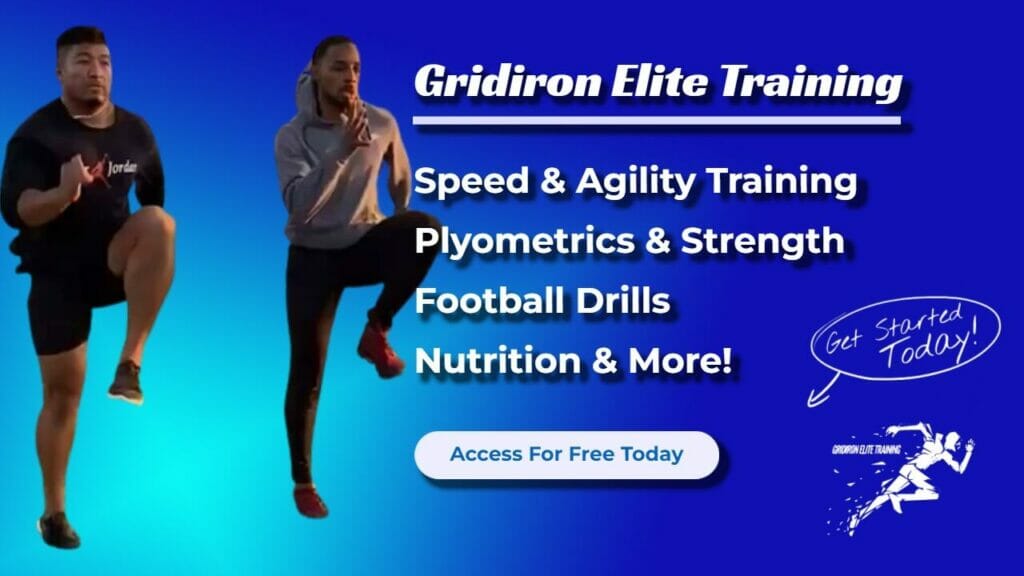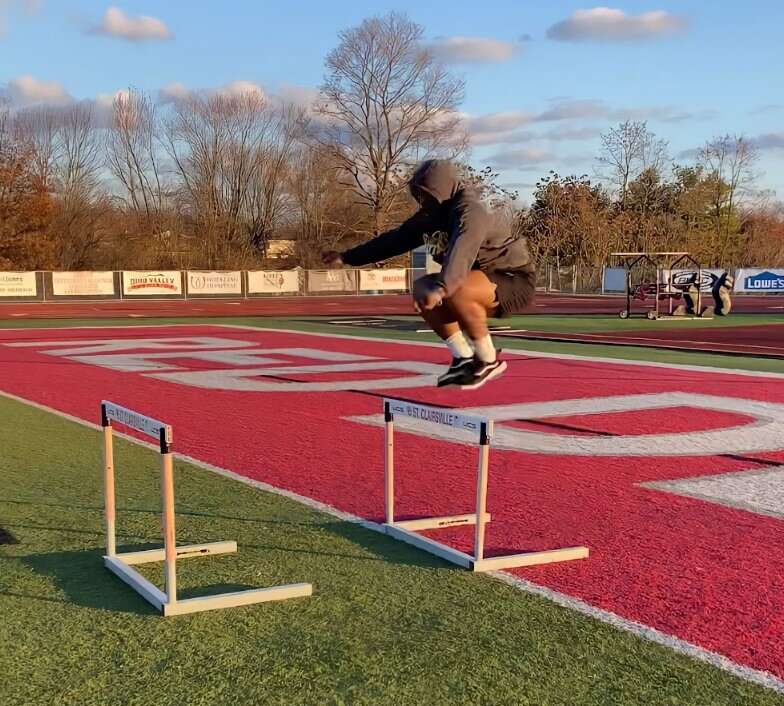
Benefits of Plyometric Training
Written By: Gridiron Elite Training

Benefits of Plyometric Training
Written By: Gridiron Elite Training
Why Is Plyometric Training Important
Plyometric training is a form of exercise that has gained popularity in recent years due to its effectiveness in improving athletic performance. It involves quick and explosive movements that help to improve speed, power, and agility.
Plyometric training is a type of exercise that involves explosive movements, such as jumping, hopping, and bounding. These exercises are designed to help athletes develop explosive power, speed, and agility. Plyometric training typically involves jumping onto and off of boxes, hopping over cones, and performing exercises like depth jumps and squat jumps.
Plyometric training involves short, intense bursts of activity that target the fast-twitch muscle fibers. These fibers are responsible for generating explosive power, which is why plyometric training is so effective for improving athletic performance.
This kind of training benefits any athlete but is beneficial for athletes who need to change direction quickly. Plyometrics are typically done as jumping exercises where the muscles are stretched as they contract. The benefits of plyometric training include increased muscle strength, improved coordination, and agility.
These exercises are very efficient because they work on explosive power and speed. They are also very safe when done correctly because they do not require any weights or other heavy equipment.
In this blog post, we will explore plyometric training and its benefits.
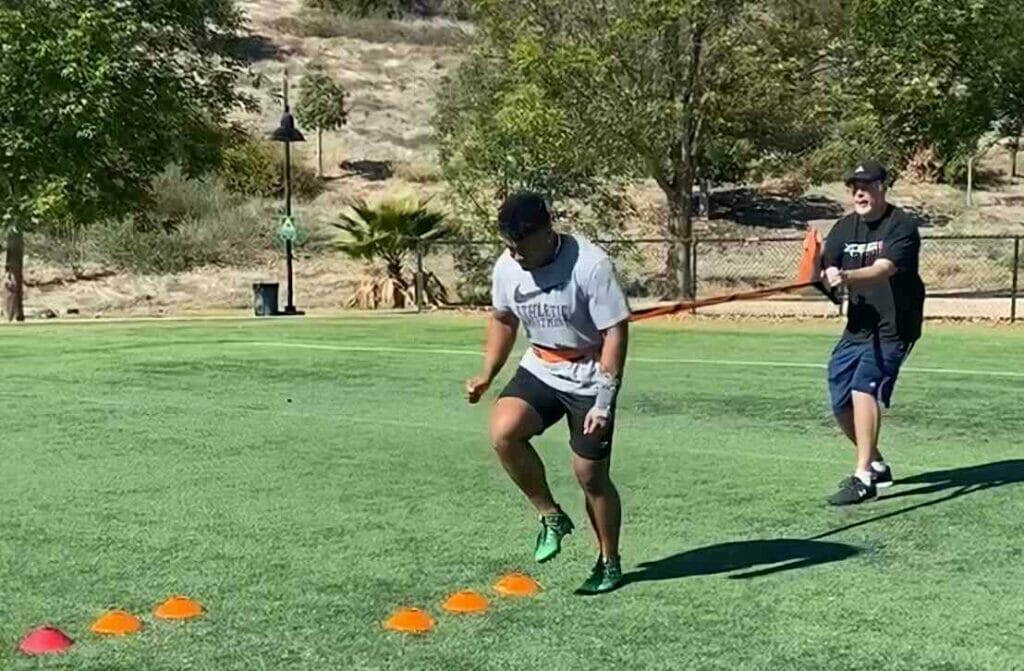
| Preview | Product | Rating | Price | |
|---|---|---|---|---|

|
X-PLOSIVE Speed Training Kit/Overload Running Resistance & Release/Harness & Resistance Band, Speed... | No ratings yet |
$59.99 |
Buy on Amazon |
Benefits of Plyometric Training
Plyometric training helps you build explosive power through quick, powerful movements.
Here are some of the benefits of plyometrics for athletes:
Improves Power
Plyometric training can help to improve your power output, which is essential for explosive movements like jumping and sprinting. By training your fast-twitch muscle fibers, plyometric exercises can help you generate more power in less time, which can lead to better performance on the field.
Increases Speed
Plyometric training can help to improve your speed by improving your explosive power. By training your fast-twitch muscle fibers, plyometric exercises can help you generate more power with each stride, which can lead to faster sprinting times and better agility on the field.
Enhances Agility
Plyometric training can also help to enhance your agility. The quick and explosive movements in plyometric exercises can help to improve your footwork and balance, which can make you a more effective athlete on the field.
Builds Muscle
Plyometric training can also help to build muscle. These exercises target the fast-twitch muscle fibers, which are responsible for building muscle mass. By incorporating plyometric exercises into your training program, you can build lean muscle mass, which can lead to better athletic performance.
Improves Cardiovascular Health
Plyometric training can also help to improve your cardiovascular health. These exercises are high-intensity, which means they can get your heart rate up and improve your cardiovascular endurance over time.
Why Is Plyometric Training Important
Plyometrics are an essential part of a workout routine for athletes. Plyometric exercises help to build muscle, strength, and power. In addition, they are a great way to develop your quickness and the ability to generate force quickly.
To begin a plyometric workout, you should start with a proper warm-up. This will prepare your body for the intense training that is about to take place. You should then do a few basic exercises, such as jumping jacks or lunges, before doing more advanced plyometrics, such as squat jumps or tuck jumps. After this, you should progress to the upper body plyometric warm-up. Start with a push-up and then add additional arm stretches. Then move on to your workout.
The best way to start plyometric training for athletes is by following a progressive program. This will help you build up your strength and endurance to handle the intensity of plyometrics. The following is an example of a workout that would be included in a progressive plyometric program designed for beginner athletes.
Jump rope - 2x1 minute
| Preview | Product | Rating | Price | |
|---|---|---|---|---|

|
DEGOL Skipping Rope with Ball Bearings Rapid Speed Adjustable Jump Rope Cable and 6” Memory Foam... | No ratings yet |
$7.99 |
Buy on Amazon |
Two feet hurdle quick hops - 3x10 seconds
| Preview | Product | Rating | Price | |
|---|---|---|---|---|

|
Forza Speed Training Hurdles | Enhance Agility and Speed for Multi-Sport Training - Choose from 6'',... | No ratings yet | $59.99 | Buy on Amazon |
Side to side jumps over object - 2x10 total jumps (5 each way)
| Preview | Product | Rating | Price | |
|---|---|---|---|---|

|
VEVOR Plyometric Platform Box Fitness Exercise Jump Box Step Plyometric Box Jump for Exercise Fit... | No ratings yet |
$41.99 |
Buy on Amazon |
Tuck jumps - 2x10
180 jumps - 2x10 total jumps
Triple Broad jumps - 2x8
Plyo Push-Ups - 3x10
Rolling side planks - 2×10 each way
Single leg v-up - 2×10 each
Plank push Ups - 2×10 each
For the full plyometric program, you can check out our Thor Plyometric Program to help you increase your explosiveness and power.
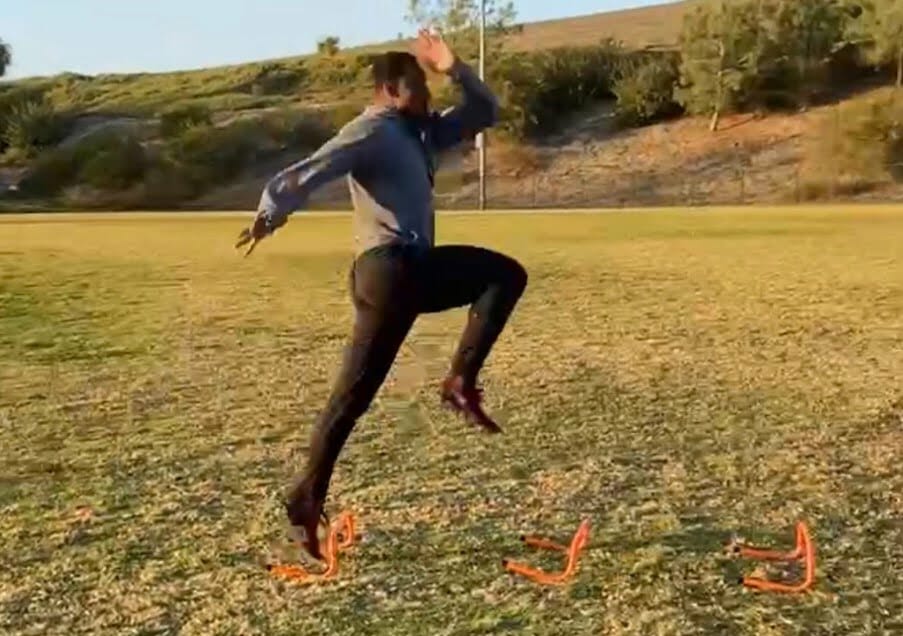
3 Tips for Beginners in Plyometric Training to Get the Best Results
Here are some tips for beginner athletes in plyometric training to get the best results.
1) Take it slow with plyometric exercises in your warm-up phase. This will help you develop proper form and technique before doing more challenging plyometric exercises.
2) Start with low-intensity plyometrics exercises before you move on to high-intensity ones. This will help your body get used to the training and prevent injury.
3) Avoid overdoing it with plyometrics training because this can also lead to injury!
3 Strategies to Master the Skill of Jumping Higher
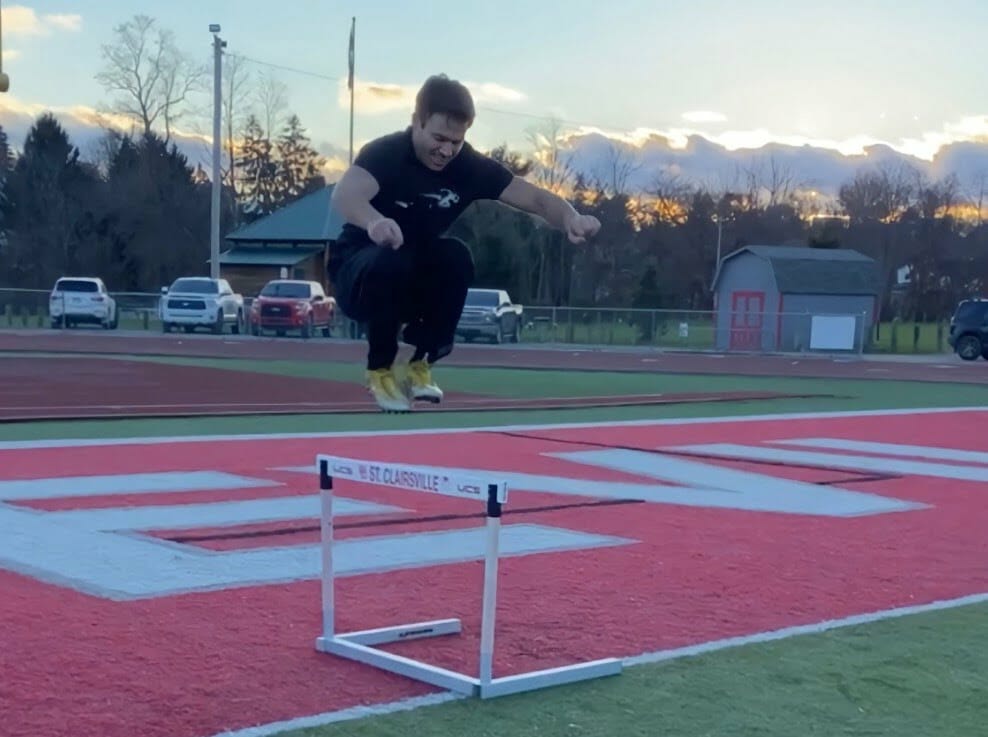
| Preview | Product | Rating | Price | |
|---|---|---|---|---|

|
Champion Sports Adjustable Height Training Hurdle, Red | No ratings yet |
$67.26 |
Buy on Amazon |
The most important thing to remember when trying to jump higher is that it requires a lot of practice. It is not going to happen overnight, and it will take time and dedication. However, there are many ways in which you can practice jumping higher, including using plyometric workouts in your routine.
Here are three strategies to help you jump higher.
1) Start with a beginner routine, suitable for those who want to build up their skills gradually.
2) Increase the intensity of your routine by doing more repetitions or adding weight to the exercise.
3) Mix up your routines by trying different plyometric moves and adding new ones into your training program.
Plyometric workouts are a great way to challenge yourself and improve your skills. So challenge yourself with this plyometric workout to start jumping higher today.
If you need more explosive workouts for football to do for your speed and agility training, you can read some of our latest posts on the “What Are Plyo Boxes Good For and How Can They Help Athletes?” and “Plyometric Training for Sport Specific Power: The Complete Guide.”
Suppose you’re a serious football player looking to play at the next level. You can access our sports performance training programs, football drills, workouts, and the Gridiron Recruiting Center inside “The Gridiron Academy” to help you with your football recruiting.
Subscribe To Get Updates On Newly Released Articles
Don't forget to share this post!
Continue Reading More Football Training Tips Below
Related Articles
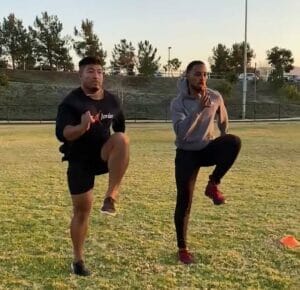
How To Increase Sprint Speed And Acceleration
Learn how to improve your sprint speed. These 5 ways to increase your sprinting speed will help you run faster and farther.
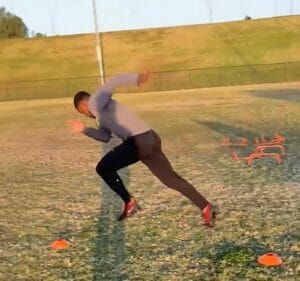
How To Get Explosive Speed For Football
A football player’s speed is essential for success. Here are 10 tips to help you improve your speed for football games.
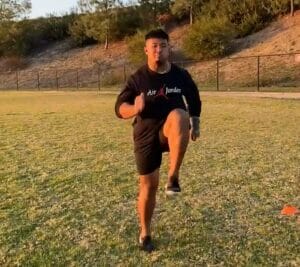
Training Speed And Agility For Beginners
These beginner speed and agility drills are essential for football and other sports. These exercises are designed to use in your speed and agility workouts.

Gridiron Elite Training was started to help educate and provide football players with a community to receive proper training and guidance.
We created “The Gridiron Elite Academy” which is an online football performance network that provides football players of all levels with sports performance workout programs, football position-specific drills, mindset coaching, mental toughness training, recruiting guidance and help, and nutrition programs.

